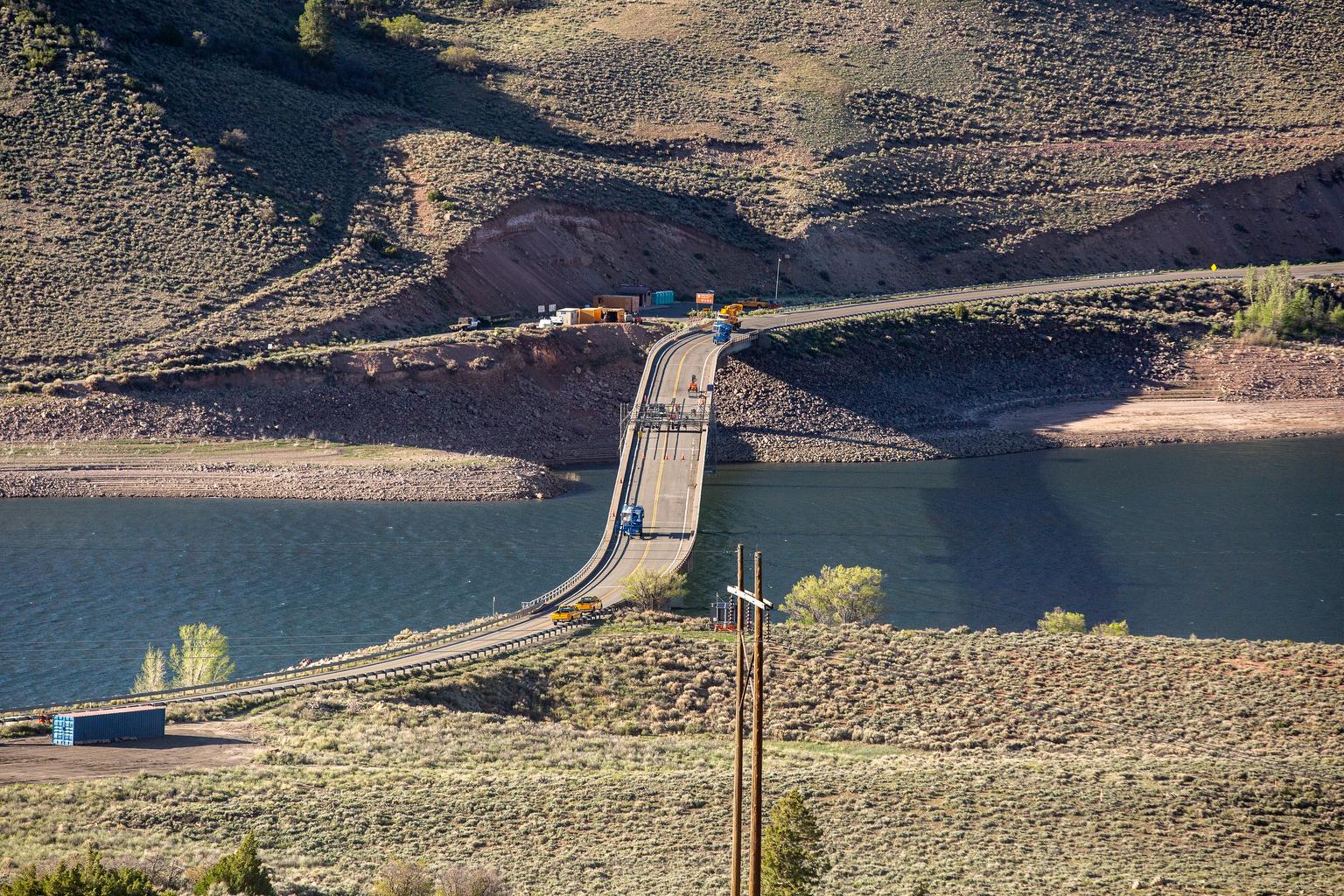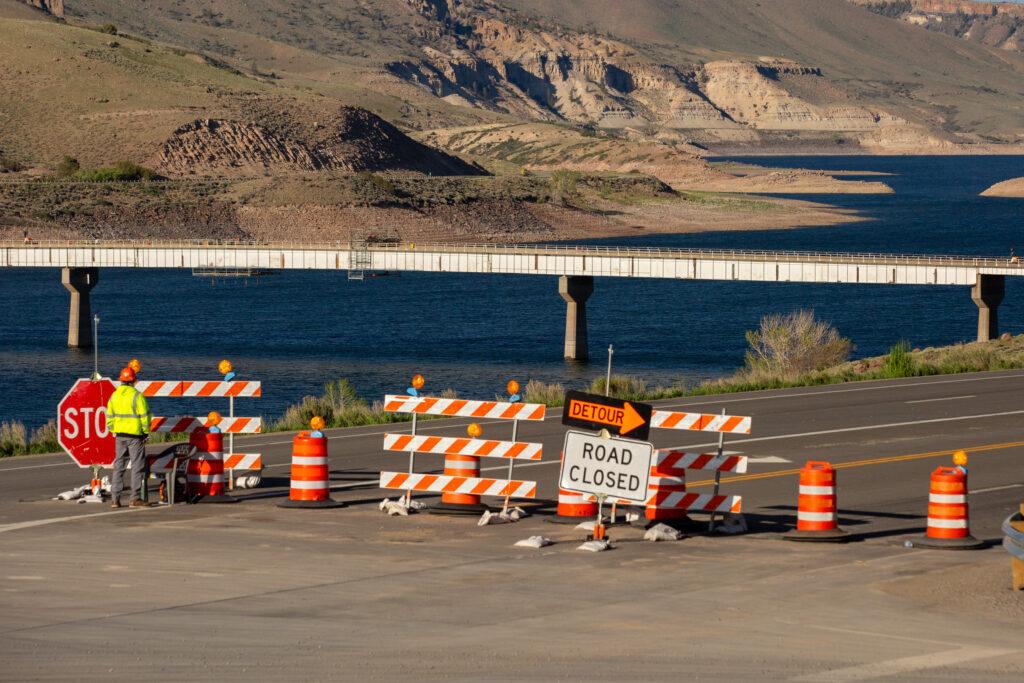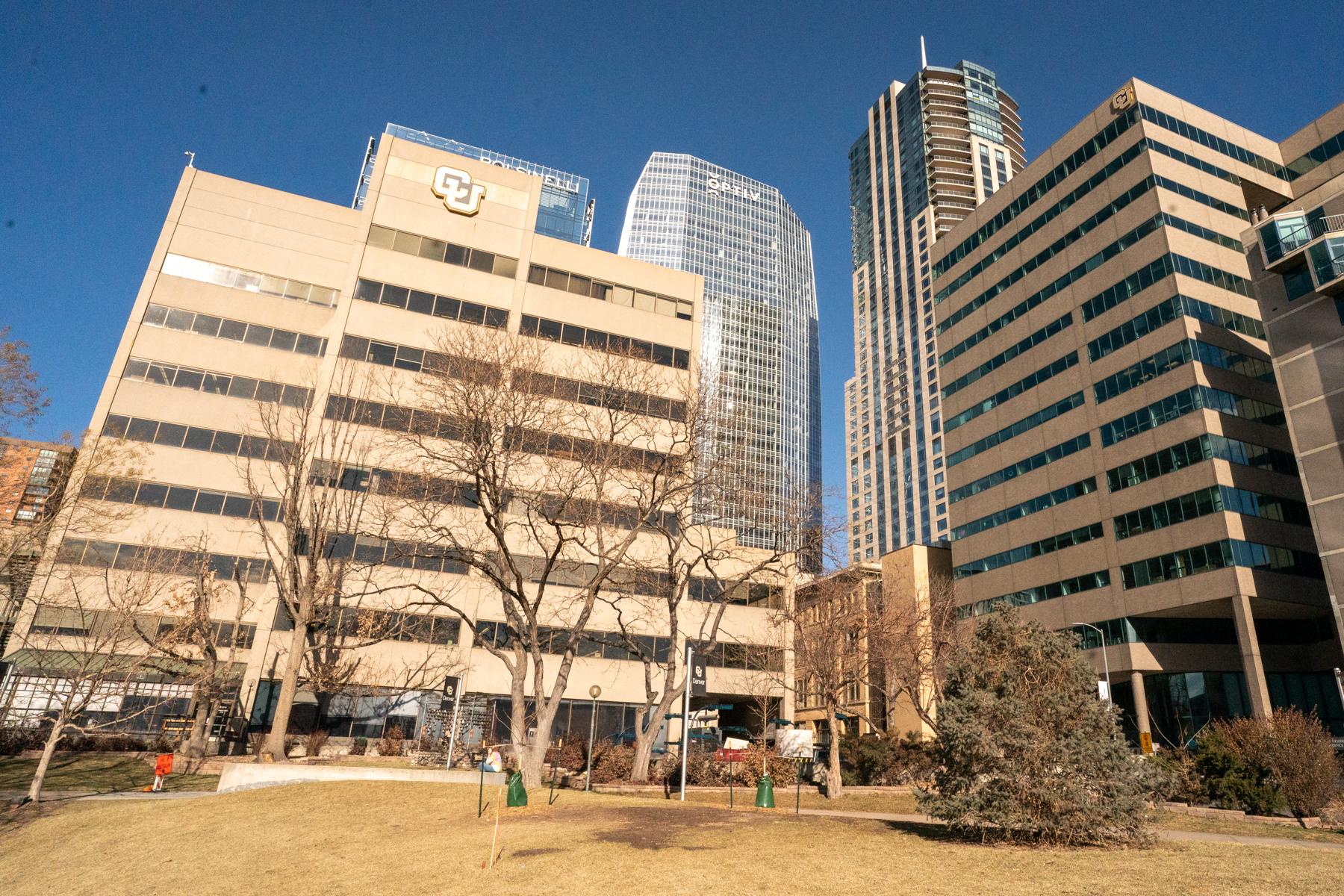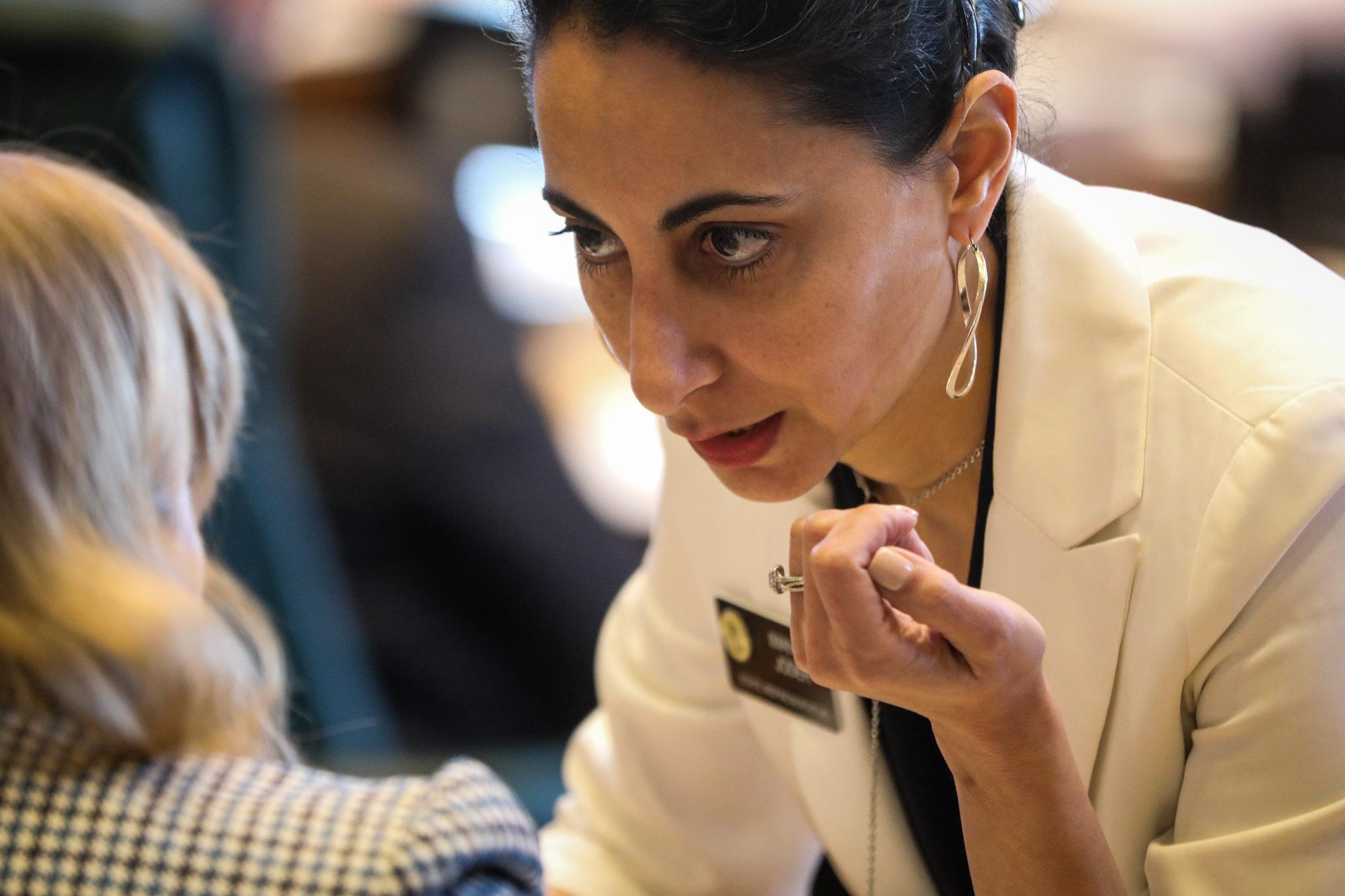
For the first time in two-and-a-half months, vehicles on Wednesday morning rolled across a crucial bridge that connects the Montrose and Gunnison areas.
“It is a huge relief,” said Kendal Rota, who owns the Sapinero Village Campground, not far from the Blue Mesa Middle Bridge, which had been closed since April 18 when state transportation workers discovered dangerous cracks in its steel.
The bridge is now open in a limited capacity. A pilot car will lead small vehicles across one lane for 12 hours a day, from 6:30 a.m. to 6:30 p.m. Starting July 8, however, the bridge will only be open from 6:30 a.m. to 8:30 a.m. and 4:30 p.m. to 6:30 p.m.
Large vehicles — including tractor-trailers, RVs, buses and pickups towing trailers — will still have to use County Road 26, one of two lengthy and unpaved alternate routes that local and state officials opened.
The abrupt closure of Blue Mesa Middle Bridge caused chaos for locals like Rota, whose home and business were effectively disconnected from Gunnison, where her husband works and their three kids go to school. What would normally be a 30-minute drive became a four-hour odyssey.
Within days of the bridge closure, the County Road 26 alternative route was opened for two hours in the morning and two hours in the evening. By late May, a second option over Kebler Pass provided more access in and out of the area. But the damage was already done to many local businesses like Rota’s. In the first two weeks after the closure, she had to refund $20,000 in reservations.
“I don't know if we're going to make it through this at all,” she said.
Even local families without businesses have been hurt financially, Rota said. Many have had to shell out money for hotels when their busy work or school schedules don’t fit in with limited travel windows for County Road 26.
“What hurts my heart so much is that these families had to come all out of pocket for all of this,” she said.

In an email to CPR News, Micki Trost, a spokesperson with the Colorado Division of Homeland Security and Emergency Management, said residents and businesses affected by the bridge closure are not eligible for “typical federal disaster assistance.” Currently, there is also no financial assistance available from the state. Emergency management officials are working with other state and local agencies to identify other ways to support some of those who have been affected, including businesses and agricultural communities, Trost said.
Rota is frustrated by the lack of financial assistance and poor communication from state officials. So far, she says she’s only been directed to fill out a survey.
Affected residents have communicated their concerns at a series of public meetings organized by the Colorado Department of Transportation, which also set up a hotline and hosted a coffee meetup for local business owners.
Agency spokesperson Stacia Sellers said those conversations have generally been good and that residents understand that the agency can’t speed up repairs.
“We've been very appreciative of the comments that we've been receiving, but there's frustration mixed in as well,” she said. “We understand that, and we're trying to work with the community the best way that we can.”
Sellers said the Blue Mesa Middle Bridge closure is likely the biggest state transportation disruption since a wildfire and subsequent mudslides on a burn scar forced officials to shut down portions of Interstate 70 in Glenwood Canyon in 2020 and 2021 — but even those didn’t last as long as the Blue Mesa bridge closure.
On its website, CDOT reminded the public that businesses are still open on either side of the closure. Sellers said the agency is always looking for more ways to spread that message.
As disruptive as this closure has been, however, Sellers said it’s fortunate that transportation workers discovered the bridge before a potentially deadly disaster.
“You see other tragedies happen across the country, and we're glad that we're able to catch this,” she said.








